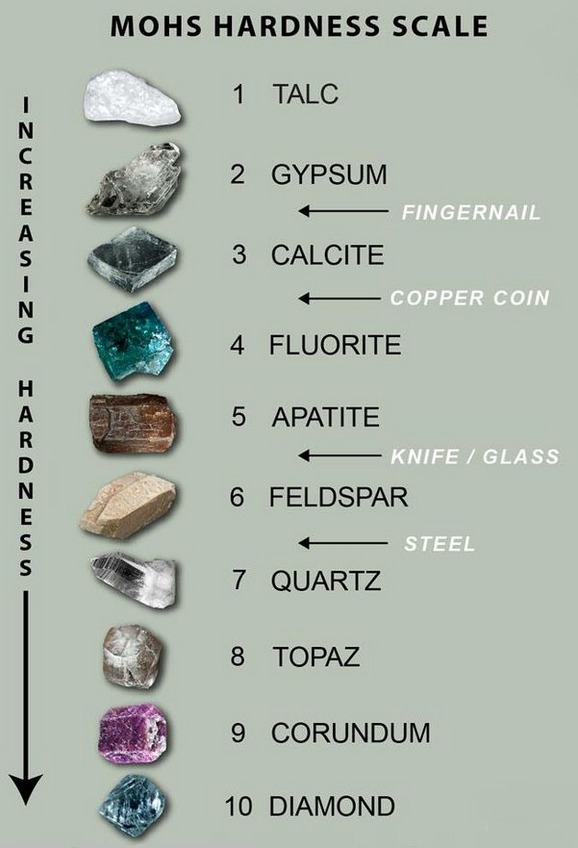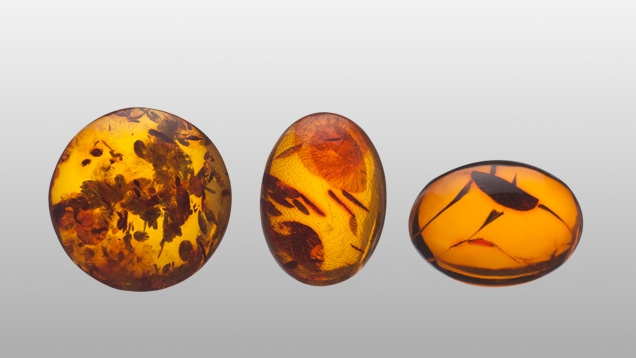Gemstone Guide
SDE’s Gemstone Guide provides some key information about the most common gemstones used in jewellery today.

A gemstone (also called a gem, fine gem, jewel, precious stone, or semi-precious stone) is a piece of mineral crystal which, in cut and polished form, is used to make jewelry or other adornments. However, certain rocks (such as lapis lazuli and opal) and occasionally organic materials that are not minerals (such as amber, jet, and pearl) are also used for jewelry and are therefore often considered to be gemstones as well. Most gemstones are hard, but some soft minerals are used in jewelry because of their luster or other physical properties that have aesthetic value. Rarity is another characteristic that lends value to a gemstone.
Apart from jewelry, from earliest antiquity engraved gems and hardstone carvings, such as cups, were major luxury art forms. A gem maker is called a lapidary or gemcutter; a diamond cutter is called a diamantaire.

Amber

Amber is nature’s time capsule. This fossilized tree resin contains remnants of life on earth millions of years ago.
The Greeks called amber elektron, or “made by the sun.” Homer praised its bright glow. The Egyptians buried it in tombs for the afterlife. Today’s scientists value amber too: it provides a three-dimensional window into prehistoric ecosystems through the myriad animal and plant inclusions it contains.
While amber isn’t a birthstone, it is associated with the astrological sign of Taurus.
HEAT TREATMENT
– the exposure of a gem to high temperatures for the purpose of altering its color and/or clarity.
The most commonly encountered heat-treated gems include.
Amber – When amber is submerged in hot oil—linseed oil for example—it's inherent body color can darken, and the material can take on a clearer appearance. The hot oil can also cause the material to develop a series of spangled, glittery inclusions.

The rounded inclusions in amber are caused by immersing it in heated oil, which results in a “spangled” effect.
Amethyst

Amethyst is a violet variety of quartz. The name comes from the Greek - Amethystos. In ancient Greece it was believed that the stone protected its owner from drunkenness. The ancient Greeks wore amethyst and carved drinking vessels from it in the belief that it would prevent intoxication.
Amethyst is a semiprecious stone that is often used in jewelry and is the traditional birthstone for February.
Ametrine

This transparent quartz has colors of both amethyst and citrine, and is called ametrine or amethyst-citrine.
Ametrine, one of the rarest types of transparent quartz, combines two colors: amethyst’s purple and citrine’s orange-to-yellow, growing together in a single crystal.
Aquamarine

Named after seawater, aquamarine’s fresh watery hue is a cool plunge into a refreshing pool.
Blue to slightly greenish-blue variety of the mineral beryl. Crystals are sometimes big enough to cut fashioned gems of more than 100 carats. Well-formed crystals might make superb mineral specimens.
Click to see our Aquamarine Collection
Black diamond

Black diamonds are diamonds with a very high number of inclusions. While inclusions on a regular white or colorless diamond may show up as tiny dark specks, at extremely high levels, the diamond appears completely black. SDE sets especially many black diamonds in men's wedding bands and bracelets.
Blue sapphire

The name “sapphire” can also apply to any corundum that’s not ruby, another corundum variety.
Depending on their trace element content, sapphire varieties of the mineral corundum might be blue, yellow, green, orange, pink, purple or even show a six-rayed star if cut as a cabochon.
Citrine

Citrine is the transparent, pale yellow to brownish orange variety of quartz.
Citrine’s color comes from traces of iron. It’s perhaps the most popular and frequently purchased yellow gemstone and an attractive alternative for topaz as well as for yellow sapphire.
Zircon

Zircon is a colorful gem with high refraction, scintillation and fire.
Optical properties make it bright and lustrous. Best known for its brilliant blue hues; also comes in warm autumnal yellows and reddish browns, as well as red and green hues. Nb! Must not be confused with Cubic Zircon - it's synthetic counterpart.
Diamond

Diamonds are among nature’s most precious and beautiful creations.
This hardest gem of all is made of just one element: carbon. It’s valued for its colorless nature and purity. Most diamonds are primeval—over a billion years old—and form deep within the earth.
Emerald

Emerald is the bluish green to green variety of beryl, a mineral species that includes aquamarine.
The most valued variety of beryl, emerald was once cherished by Spanish conquistadors, Inca kings, Moguls, and pharaohs. Today, fine gems come from Africa, South America, and Central Asia.
Fancy color diamond

Dazzling brilliance. Captivating color. The planet’s most valued gems are fancy color diamonds.
Fine color diamonds are the most rare and costly of all gemstones. Their ranks include the world’s most famous jewel—the Hope—and the most expensive gem ever auctioned—The Graff Pink.
Fancy sapphire

Et quasi architecto beatae vitae dicta sunt explicabo. Nemo enim ipsam voluptatem quia voluptas sit aspernatur aut odit aut fugit, sed quia consequuntur magni dolores eos qui ratione voluptatem sequi nesciunt.
Garnet

Et quasi architecto beatae vitae dicta sunt explicabo. Nemo enim ipsam voluptatem quia voluptas sit aspernatur aut odit aut fugit, sed quia consequuntur magni dolores eos qui ratione voluptatem sequi nesciunt.
Lapis lazuli

Et quasi architecto beatae vitae dicta sunt explicabo. Nemo enim ipsam voluptatem quia voluptas sit aspernatur aut odit aut fugit, sed quia consequuntur magni dolores eos qui ratione voluptatem sequi nesciunt.
Morganite

Morganite is the pink to orange-pink variety of beryl, a mineral that includes emerald and aquamarine.
Like its cousins emerald and aquamarine, morganite is a variety of the beryl mineral species. This gem gets its subtle blush when a trace amount of manganese makes its way into morganite’s crystal structure.
Onyx

Black onyx is a extremely popular semiprecious in men's silver and gold rings.
Onyx primarily refers to the parallel banded variety of the silicate mineral chalcedony. Agate and onyx are both varieties of layered chalcedony that differ only in the form of the bands: agate has curved bands and onyx has parallel bands.
The colors of its bands range from black to almost every color. Commonly, specimens of onyx contain bands of black and/or white. Onyx, as a descriptive term, has also been applied to parallel banded varieties of alabaster, marble, obsidian and opal, and misleadingly to materials with contorted banding, such as "Cave Onyx" and "Mexican Onyx".
Opal

Fireworks. Jellyfish. Galaxies. Lightning. Opal’s shifting play of kaleidoscopic colors is unlike any other gem.
Opal’s microscopic arrays of stacked silica spheres diffract light into a blaze of flashing colors. An opal’s color range and pattern help determine its value.
Pearl

Perfect shining spheres. Lustrous baroque forms. Seductive strands, warm to the touch. Pearls are simply and purely organic.
Produced in the bodies of marine and freshwater mollusks naturally or cultured by people with great care. Lustrous, smooth, subtly-colored pearls are jewelry staples, especially as strands.
Peridot

Found in lava, meteorites, and deep in the earth’s mantle, yellow-green peridot is the extreme gem
Yellow-green gem variety of the mineral olivine. Found as nodules in volcanic rock, occasionally as crystals lining veins in mountains of Myanmar and Pakistan, and occasionally inside meteorites.
Rose quartz

Rose quartz is a quartz variety that gets its name from its delicate pink color.
Microscopic mineral inclusions cause the pink color and translucence of rose quartz. Well shaped, transparent pink quartz crystals are rare.
Click to see our Rose Quartz Collection
Ruby

Et quasi architecto beatae vitae dicta sunt explicabo. Nemo enim ipsam voluptatem quia voluptas sit aspernatur aut odit aut fugit, sed quia consequuntur magni dolores eos qui ratione voluptatem sequi nesciunt.
Spinel

Et quasi architecto beatae vitae dicta sunt explicabo. Nemo enim ipsam voluptatem quia voluptas sit aspernatur aut odit aut fugit, sed quia consequuntur magni dolores eos qui ratione voluptatem sequi nesciunt.
Sunstone

Et quasi architecto beatae vitae dicta sunt explicabo. Nemo enim ipsam voluptatem quia voluptas sit aspernatur aut odit aut fugit, sed quia consequuntur magni dolores eos qui ratione voluptatem sequi nesciunt.
Tanzanite

Et quasi architecto beatae vitae dicta sunt explicabo. Nemo enim ipsam voluptatem quia voluptas sit aspernatur aut odit aut fugit, sed quia consequuntur magni dolores eos qui ratione voluptatem sequi nesciunt.
Thoulite

Et quasi architecto beatae vitae dicta sunt explicabo. Nemo enim ipsam voluptatem quia voluptas sit aspernatur aut odit aut fugit, sed quia consequuntur magni dolores eos qui ratione voluptatem sequi nesciunt.
Tourmaline

Et quasi architecto beatae vitae dicta sunt explicabo. Nemo enim ipsam voluptatem quia voluptas sit aspernatur aut odit aut fugit, sed quia consequuntur magni dolores eos qui ratione voluptatem sequi nesciunt.
Turquoise

Azure sky, robin’s egg blue: Vivid shades of turquoise define the color that’s named after this gem.
Ancient peoples from Egypt to Mesoamerica and China treasured this vivid blue gem. It’s a rare phosphate of copper that only forms in the earth’s most dry and barren regions.